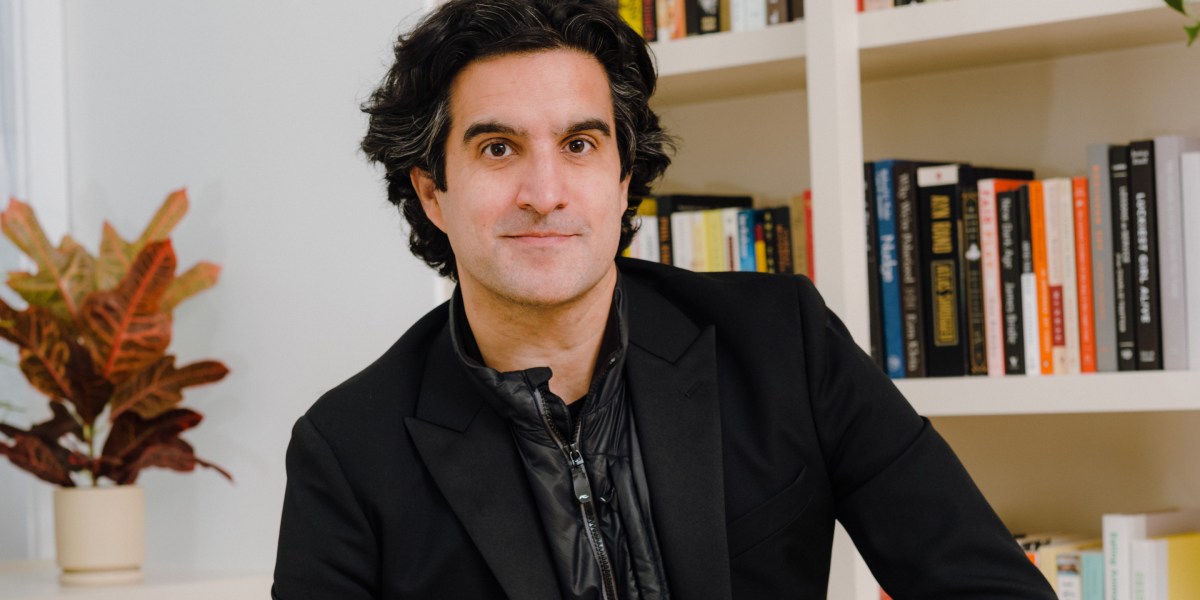This post was originally published on this site
https://fortune.com/img-assets/wp-content/uploads/2024/03/DUNN-WEB.jpg?w=2048
In this biweekly column, Andy Dunn—the founding CEO of Bonobos and Pie—offers advice on leading teams, building things, and surviving the startup life. Got a question for Andy? Ask it here.
I’m on a bumpy ride, trying to be a good father and husband while quitting my job to become a full-time entrepreneur. What advice could you provide to entrepreneurs trying to juggle a successful business career and being a good partner and parent? – Javier
Oh dear. Not sure I’m leading by example, here.
I once spoke to a three-time founder. She told me she did one startup before she had kids, one while she had young kids, and one while her kids were older. She asked me which one I thought had been the easiest.
“Before you had kids?” I guessed.
Her reply shocked me:
“When I had no kids, I didn’t know when to stop,” she told me. “That was the hardest. The easiest? When I had young kids. Because if I didn’t care for them, they wouldn’t make it. This created a forced boundary that actually made me better at both my work and my family life.”
As the father of a three-year-old, I sometimes feel similarly.
Here’s the way I do it: I make sure I get quality time with my son every day. It’s not always more than a couple hours, but it’s quality. I don’t do evening work events. Almost never.
Friday night my wife and I shut it down, shut off the computers and phones, and we then spend 24 hours offline so Saturday can be a day together for the family where we are all present.
Sunday, I bring my son to my mom and dad and sister’s apartment building, where they live next door to each other. Then I have a chill day where they do the childcare and I’m in and out for meals. That day enables my wife, also an entrepreneur, to work, and me to reboot, do a bit of work, and get some tennis or basketball in.
It takes a tribe to raise a child.
Moving to the same town that’s home to my parents and sister Monica (of Monica + Andy, our organic baby apparel biz) has been a critical game-changer. So has the good fortune of being an exited founder, which enables me to afford the best nanny in the game: She works her a** off and stays over a few nights a month when we need her to, so that Manuela and I can go on a date, or take quick work trips if we need to.
I try to cap my non-family travel at three nights a month. This was made possible only because I divested other responsibilities and rebooted my team to five days a week, in-person, here in Chicago.
There are multiple vectors of privilege in what I describe above. An arrangement like mine may not be possible for everyone.
If you have to choose between a startup and your family, pick your family. Your kids will leave one day, your ambition will not. You can always start something later, and get a steadier job for now where you can have a higher W-2, and less stress. You can keep learning and growing, even if it’s not a hyperspeed clip, and cook up your next idea.
Then when the moment is right, you can jump back in. Maybe that’s when your kids are older and don’t want to hang out with you, or maybe it’s when they’ve left the house.
If we take care of ourselves, life is long. It’s a game of chess. I learned one particularly valuable thing from a mentor, Joel Peterson of Stanford b-school, who has seven kids and 23 grandkids. Joel told me that we have to know what the crystal balls and rubber balls in our lives are. The crystal balls are the ones we can’t drop.
I’ve launched a startup, Coffeehouse, that’s developing an app to help voters research their candidates. I’m wondering: How do you organize your company? More specifically, how do you organize the people who report to you? – Josh
I’d need to know more on team size to give very specific advice. But the headlines are this: Keep as many direct reports as you can manage in the early days. Certainly seven and maybe up to twelve.
Why?
It will keep you closer to everyone, and it only takes up to 12 hours a week (12 hour-long 1:1’s). For the 1:1s, make sure your directs send you a detailed agenda 24 hours before each meeting on what they have accomplished, what they want to accomplish, what the blockers are, where they need input, how they’re doing, how they’re team is doing, and what their team would say they’re not doing well.
Then do quarterly “skip” 1:1’s with all of their direct reports.
This way, as you scale, you can calibrate and triangulate who is a good leader, not in terms of how they manage up, but in terms of how they lead their teams.
And as you get to a larger scale, when you likely do need to collapse down to 6-8 direct reports to maintain your sanity, you’ll have relationships deeper in the organization that will be invaluable to figuring out what’s going on.
In short, worry less about who owns what, and worry more about staying close to everything going on so you can evaluate and reward leadership talent as you scale.
The rest will work itself out, as you’ll play around with different functional ownership and move leaders in and out of scope of responsibility based on what the company needs.
A CEO’s most important job is bringing in talent, and then creating a culture and a system where that talent can develop. CEOs care about mission, money, and legacy. Folks on the team care about learning and growth and professional development.
It’s important to know the difference.





